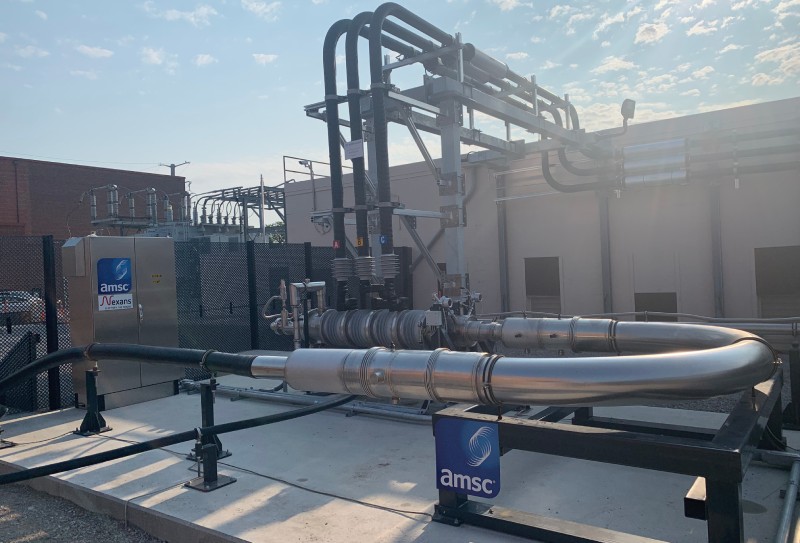Context
In June 2022, Nexans, in collaboration with SNCF Réseau and with support from Bpifrance, embarked on an innovative project aimed at enhancing the power supply infrastructure at Montparnasse train station in Paris, France. The project responds to the increasing demands on the railway network, necessitating a robust and efficient electrical system to support the growing rail traffic in one of Europe’s busiest transportation hubs.
Montparnasse station, established in 1840, ranks as France’s fourth-largest train station, serving over 50 million passengers annually with an expected surge to 90 million by 2030. The installation of superconducting cables aims to meet the escalating power demands imposed by this anticipated growth in rail traffic.
Challenges
The project faces several significant challenges, foremost among them being the need to upgrade the power supply infrastructure while minimizing disruptions to ongoing rail and road operations. The unique solution to this challenge lies in the utilization of superconducting cables, which will be integrated into Montparnasse station’s existing conduits. This approach presents engineering complexities, as it requires precise coordination to install the new cables within the confines of the pre-existing infrastructure without disrupting the station’s operations. Additionally, ensuring compatibility between the superconducting cables and the existing conduits poses technical challenges that demand meticulous planning and execution.
Key figures
+50 million
passengers annually, expected surge to 90 million passengers by 2030.
5.3 MW
per conduit
3,500 A
to 1,500 VDC
Nexans implication
Nexans plays a pivotal role in the project, drawing on its experience in superconductor technology and electrical infrastructure. The Group is tasked with designing and manufacturing the superconducting cables, as well as coordinating their installation within the existing conduits at Montparnasse station. Only a superconducting cable can combine a reduced diameter and exceptional power to deliver the performance required by SNCF Réseau: 5.3 MW per conduit, or 3,500 A to 1,500 VDC.
Superconducting power cables offer unparalleled advantages. As they have zero resistance, they transport electricity with minimal power loss and thus contribute to making the world more sustainable. This project illustrates perfectly how their compact nature enables them to transport very high power through a limited space. A single superconducting cable can replace multiple copper cables. Also, it has a minimal footprint, making high-capacity 1,500 V connections possible, which in turn improves the safety of the stations’ power supply.
Two cables connecting the Vouillé substation to the overhead lines of the tracks serving Montparnasse were pulled in the existing conduits in 2023. The main stages of this project are the design and manufacturing of the Nexans components in Bourg-en-Bresse, Calais and Hanover for a prototype loop (cable, joint, terminations) which have been tested in the SNCF Test laboratory in Vitry-sur-Seine, followed by the manufacturing of the two cables and their installation in the existing conduits.
This is a world-first that we are proud of and happy to be bringing to life with the SNCF Réseau following a productive partnership. Superconducting cables offer commercial solutions to strengthen high power electrical networks in all urban areas around the world. They are part of a technology of the future developed by Nexans and offer an extremely efficient solution benefiting companies and the general public.

CEO, Nexans
SNCF Réseau is delighted to be able to innovate and benefit from Nexans’ expertise to modernize and strengthen the electricity supply to the major train stations, allowing us to secure and improve the service provided to our customers. Developing this superconducting cable technology should enable us to achieve cost and deadline reductions. Likewise, it is proof of our teams’ know-how. We also thank Bpifrance for its financial support!
Deputy General Manager of Industrial Projects & Engineering, SNCF Réseau
The installation of superconducting cables at Montparnasse station represents a pioneering effort in enhancing the sustainability, reliability, and efficiency of railway power supply systems. Nexans’ involvement underscores its commitment to driving innovation in electrification and contributing to global sustainable development efforts.








